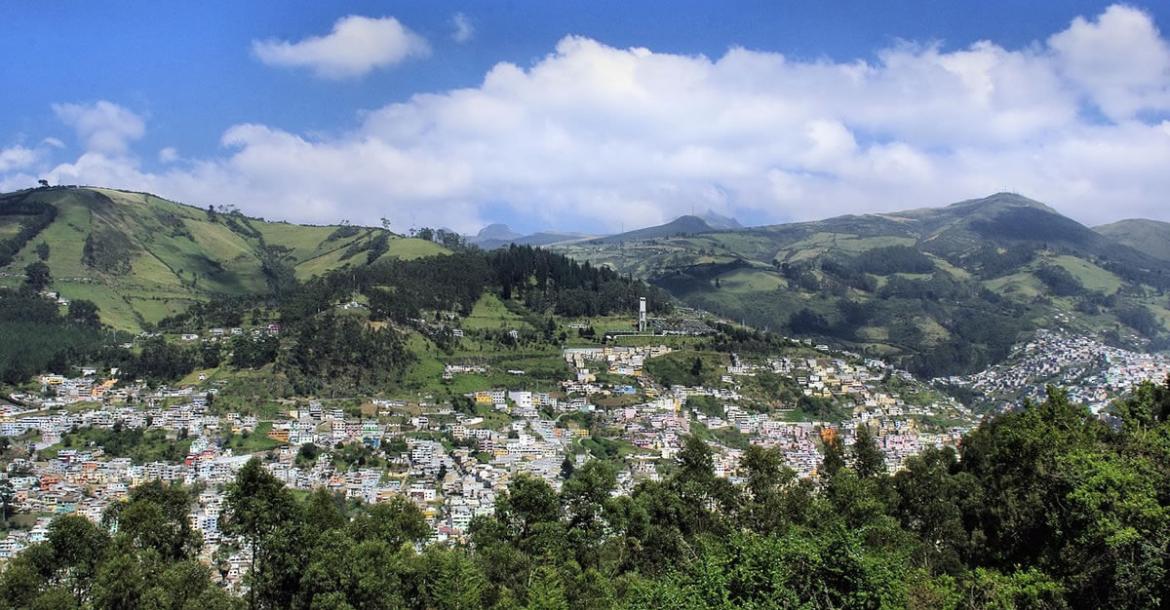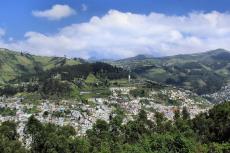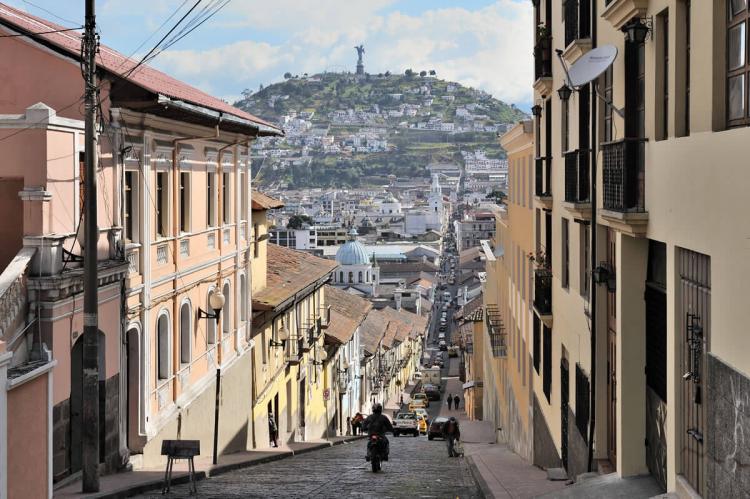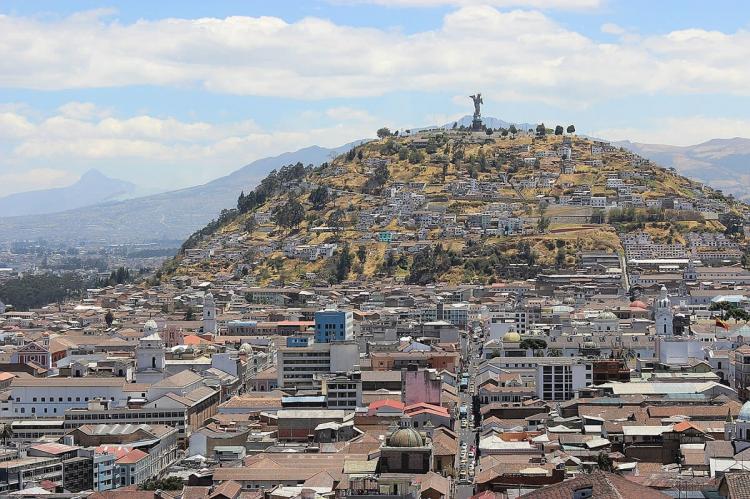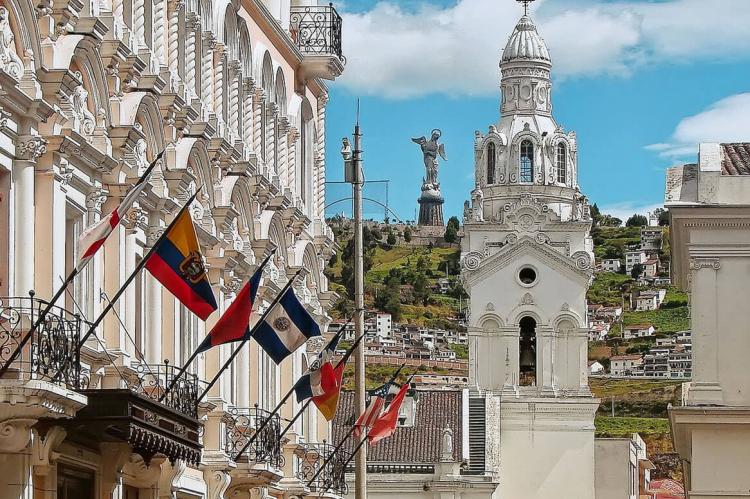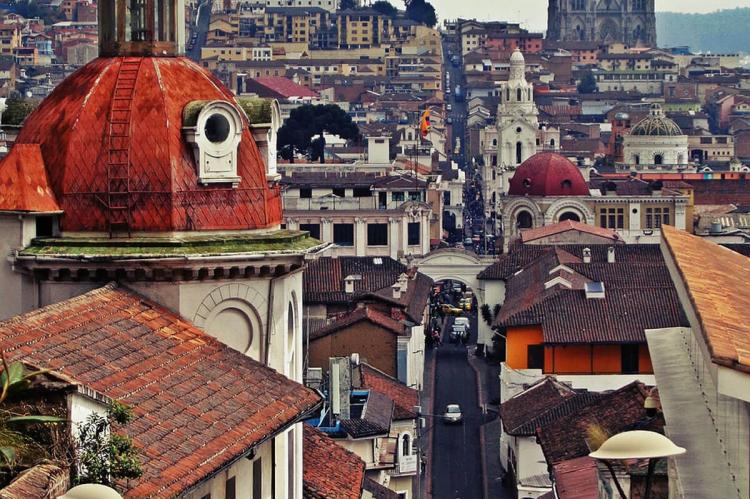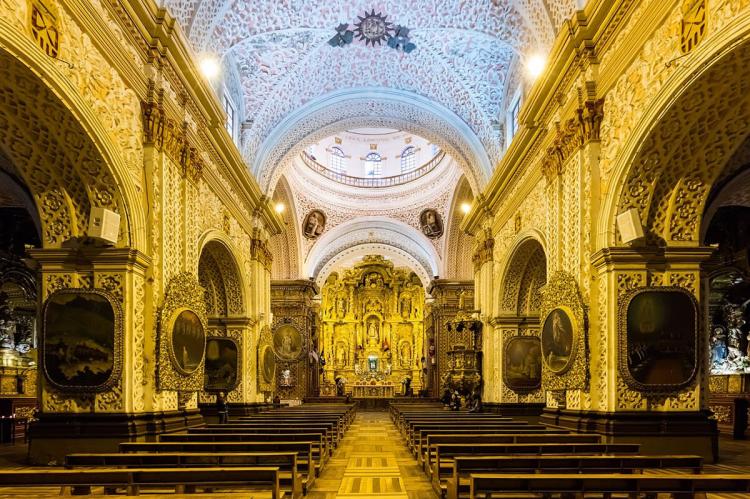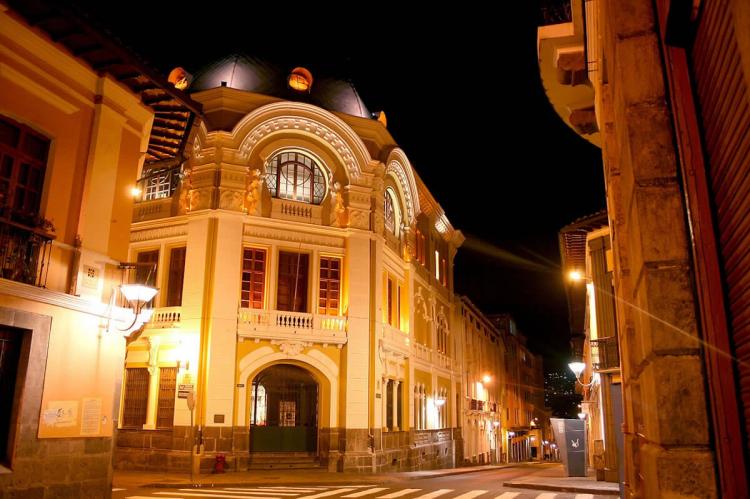Historic Center of Quito (Ecuador)
Quito, Ecuador's capital, sits high in the Andean foothills. Constructed on the foundations of an ancient Incan city, it's known for its well-preserved colonial center, rich with 16th- and 17th-century churches and other structures blending European, Moorish and indigenous styles.
Historic Center of Quito
The Historic Center of Quito, Ecuador, is a testament to the rich tapestry of history and culture that defines the city. Designated as a UNESCO World Heritage Site in 1978, this vibrant area is a living testament to the fusion of indigenous, Spanish colonial, and modern influences that have shaped Quito over the centuries.
Andean Setting
The city of Quito is nestled in the Andean highlands of Ecuador, providing it with a breathtaking and unique setting. Positioned at an elevation of approximately 2,850 meters (9,350 feet) above sea level, Quito is one of the highest capital cities in the world.
The city is surrounded by the peaks of the Andes Mountains, creating a dramatic backdrop that enhances its scenic beauty. The Pichincha Volcano, with its two prominent peaks, Rucu and Guagua, looms over the city's western edge. The diverse topography of Quito includes valleys and hills, contributing to its visually stunning landscape.
Indigenous Roots and Spanish Colonial Heritage
The area that now constitutes the Historic Center of Quito has a deep history dating back to pre-Columbian times. It was a significant location for the Quitu-Cara civilization, which predated the Inca Empire. The integration of indigenous communities and their cultural practices is a key element that contributes to the uniqueness of the Historic Center.
The Spanish conquistadors, led by Sebastián de Belalcázar, founded the city of Quito in 1534. The Historic Center became the heart of Spanish colonial administration, with its narrow cobblestone streets, colonial-era churches, and ornate plazas reflecting the architectural and urban planning principles of the time.
The Historic Center boasts numerous colonial churches that showcase the intricate fusion of Spanish Baroque and indigenous artistic styles. The Basilica del Voto Nacional, the Compañía de Jesús, and the San Francisco Church are architectural gems that draw visitors and pilgrims alike.
Plaza de la Independencia
At the heart of the Historic Center lies the Plaza de la Independencia, a central square surrounded by historical buildings such as the Presidential Palace, the Archbishop's Palace, and the Metropolitan Cathedral. The Plaza is a symbolic space, witnessing centuries of political and social events.
Points of Interest
-
Carondelet Palace: Carondelet Palace is the seat of the government of the Republic of Ecuador. The palace is in the nerve center of the public space known as Independence Square or Plaza Grande, which was built in addition to the Archbishop's Palace, the Municipal Palace, the Hotel Plaza Grande and the Metropolitan Cathedral.
-
Basilica del Voto Nacional: This basilica is Ecuador's most important neo-Gothic building and one of the most representative of the American continent. It was once the largest in the New World.
-
Cathedral of Quito: This cathedral is one of the most prominent religious symbols of spiritual value for the Catholic community in the city. This church began its construction in 1562, seventeen years after the Diocese of Quito was created (1545). The church building was completed in 1806.
-
Church of La Compañía de Jesús: The construction of this church began in 1605; it took 160 years to be built. By 1765, the work was completed with the construction of the façade. This was done by Native Americans who carefully shaped the Baroque style in one of the most complete examples of this art in the Americas.
-
Church of San Francisco: This church is the largest of the existing architectural ensembles in the historic centers of cities in Latin America. The church's construction began in 1550 on land adjacent to the Plaza, where the Native Americans engaged in the barter of products.
-
Church of El Sagrario: In colonial times, this church was one of Quito's most significant architectural marvels. The construction is of the Italian Renaissance style, built in the late 17th century. It has a screen that supports its sculptures and decorations. This structure was built by Bernardo de Legarda. Its central arch leads to a dome decorated with frescoes of biblical scenes featuring archangels by Francisco Albán. Legarda gilded the altarpiece. It is located on Calle García Moreno near the Cathedral.
-
Church of Santo Domingo: In 1580, the Dominicans started to build their temple, using the plans and direction of Francisco Becerra. The work was completed in the first half of the 17th century. Inside the church are valuable structures such as the neo-Gothic main altar. The roof of the Mudéjar style church features paintings of martyrs of the Order of Saint Dominic. In the museum, located on the north side of the lower cloister, are pieces from great Quito sculptors, such as the Saint Dominic de Guzmán by Father Carlos, the Saint John of God by Caspicara, and the Saint Thomas Aquinas by Legarda.
Preservation and Conservation Efforts
In 1978, the Historic Center of Quito was inscribed on the UNESCO World Heritage List, acknowledging its outstanding universal value. This designation has helped raise awareness about the area's need for preservation and sustainable development.
Quito has implemented various urban conservation projects to maintain the authenticity of the Historic Center. These initiatives focus on preserving colonial architecture, enhancing public spaces, and promoting cultural activities celebrating the city's heritage.
Culture
The Historic Center is a hub of cultural activity, with vibrant markets such as the Mercado Central offering a glimpse into Ecuador's diverse crafts, textiles, and traditional foods. Artisans and street performers contribute to the lively atmosphere, creating an immersive experience for visitors.
Numerous museums, including the Museo de la Ciudad and the Casa del Alabado, provide insight into Quito's history, art, and culture. These institutions play a crucial role in educating locals and tourists about the significance of the Historic Center.
Conclusion
The Historic Center of Quito, as a UNESCO World Heritage Site, stands as a living testament to the harmonious coexistence of diverse cultural influences throughout the city's history. Its colonial architecture, historical landmarks, and vibrant cultural scene make it a must-visit destination for those seeking to explore the rich heritage of Ecuador and the broader Andean region. As efforts to preserve and celebrate this unique site continue, the Historic Center of Quito remains an enduring symbol of cultural continuity and historical resilience.
